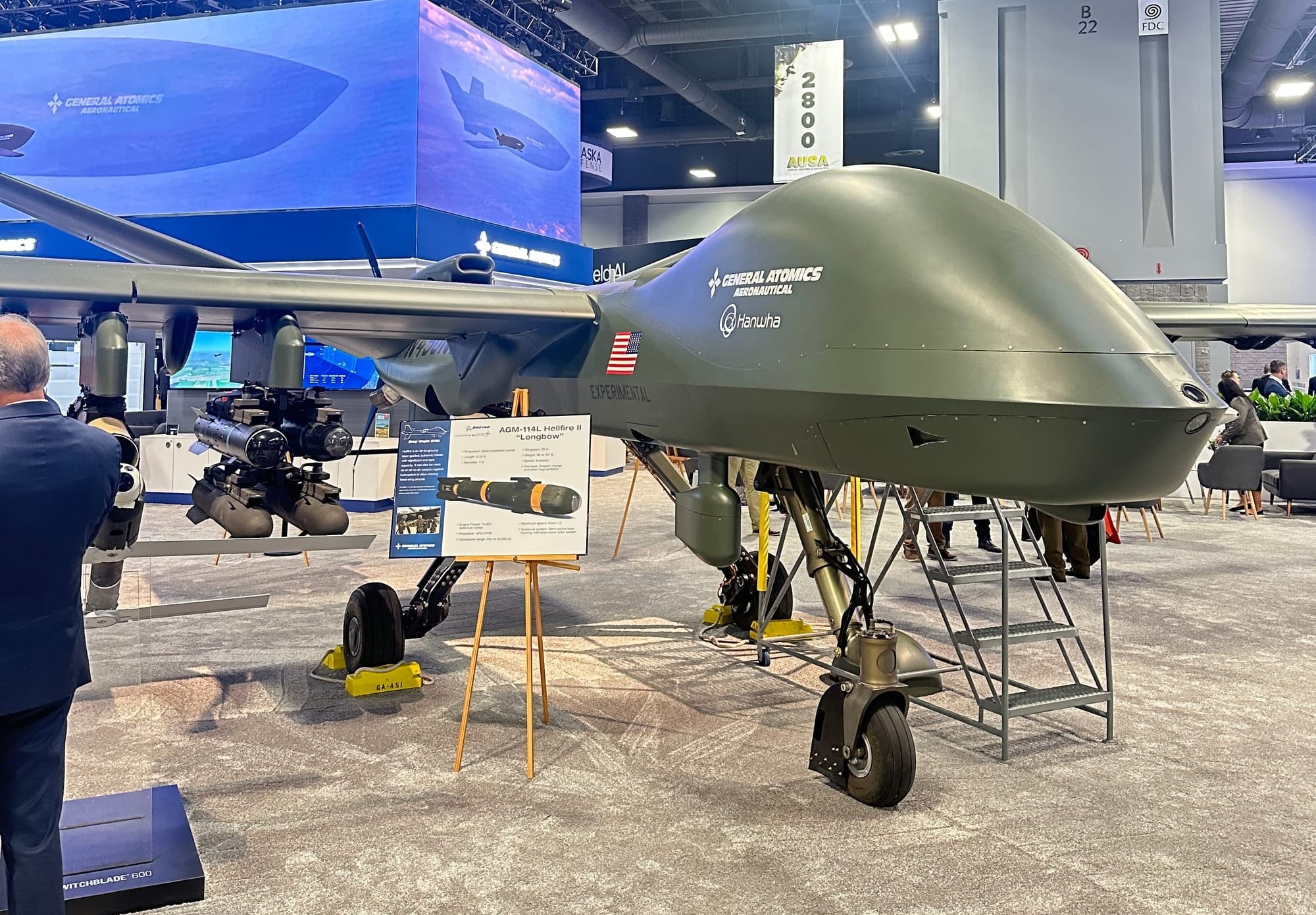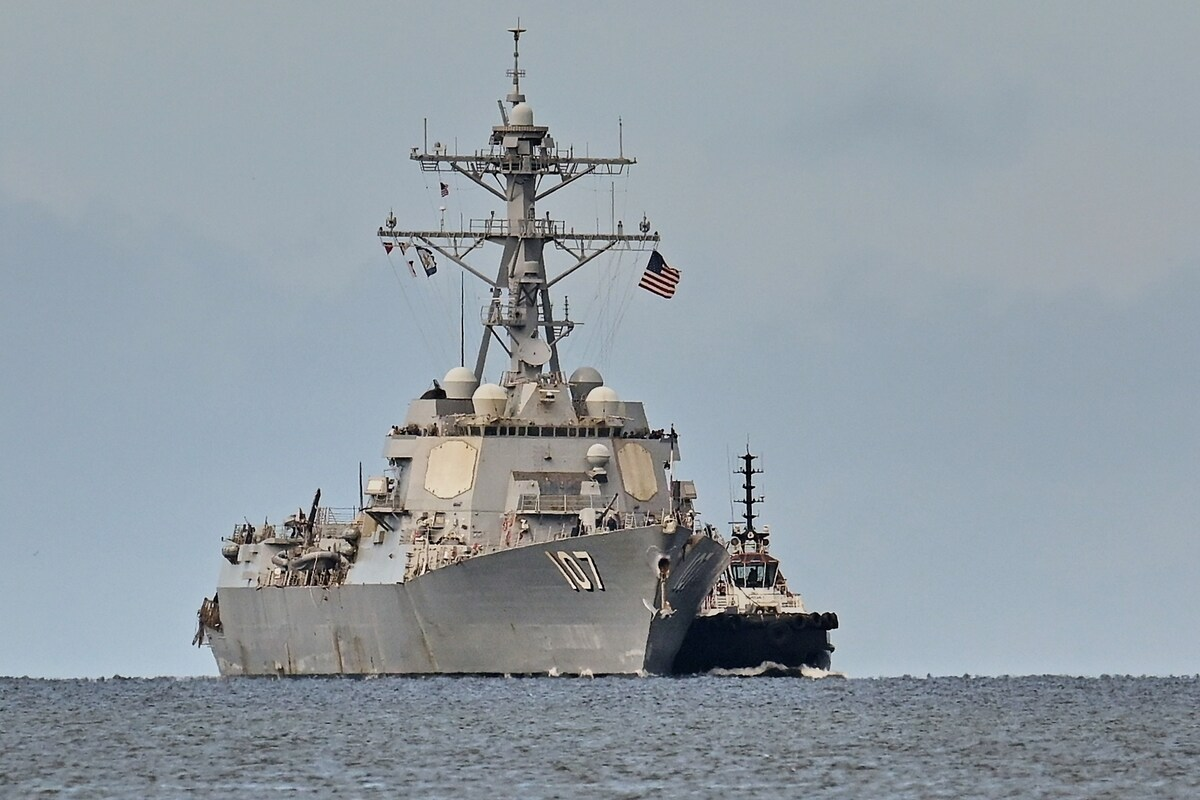It looked almost absurd at first. A white sphere moving through the upper atmosphere, calm as a cloud but deliberate in its path. In February 2023, a Chinese surveillance balloon crossed the continental United States, drifting over missile fields in Montana and training ranges in the Midwest before an F-22 ended its flight off the Carolina coast.
We were watching it long before it became breaking news. What started as a few strange flight tracks over Montana turned into a clear pattern. Our team noticed multiple KC-135 Stratotankers circling near Chester, a familiar sign that ISR aircraft were overhead. You could watch the loops form in real time on FlightRadar24, the refueling orbits tightening around something high and slow. Within hours, the Pentagon confirmed what the data already showed: a Chinese balloon was moving through U.S. airspace, carrying a payload roughly the weight of a small car.
Of course, the United States uses balloons too. But this wasn’t about us. It was about how easily someone else could exploit a layer of sky we had stopped thinking about.
That moment said less about Chinese innovation and more about our own neglect. For decades, the stratosphere has been the seam between two worlds—too high for conventional aircraft, too low for orbit. Air defense looks down. Space operations look up. The layer between has no doctrine, no routine presence, and no clear owner.
At sixty thousand feet, the air is thin and steady. Clouds stay below, winds stay predictable, and sunlight is constant. Sensors can see hundreds of miles. Radios reach across borders. Endurance stops being a constraint. For all its potential, the stratosphere became a relic of the Cold War, remembered only through names like U-2 and Global Hawk.
China didn’t rediscover it with new technology. They used old logic. A platform that could linger for days without fuel, above radar coverage, inside an airspace few nations monitor. It was primitive and it worked. The failure wasn’t in detection. It was in imagination. No one had treated that tier of sky as a contested domain in decades.
For one week, the United States remembered what sixty thousand feet really meant. It wasn’t a space problem or an air problem. It was an awareness problem. The stratosphere had become the blind spot of modern defense, and one balloon was enough to prove it.
The forgotten frontier
Now if any of you have followed my personal opinions at all, you know I love things that go boom bang or bust. But I also love things that fly. I got hooked on drones and ISR early. My uncle, Stephen Duncan, the namesake of our CEO Stephen Duncan Nix, was Assistant Secretary of Defense (or War if you like to be edgy) under two presidents. But he also served as Vice Chairman at General Atomics and helped cement the company’s place in unmanned ISR.

Now the MQ-1 and the following MQ-9 are not stratosphere systems. They fly in the troposphere. Which got me thinking when I came across Icarus: why is the stratosphere not important?
The United States once treated sixty thousand feet like contested ground. The U-2 owned it first. The SR-71 sprinted through it. Later, Global Hawk traded speed for endurance and mapped entire theaters from that band of air. The physics were friendly. The doctrine never caught up.
NASA tried to turn the layer into a runway that never ends. Pathfinder and Helios proved solar wings could live above the weather. Daylight fed the motors. Batteries carried the nights. Airbus pushed farther with Zephyr and showed how long a lightweight airframe could persist, setting records that reset expectations. It worked. It just didn’t scale.
The private sector took a swing. Google Loon bet on a network of stratospheric balloons to deliver connectivity. It solved routing and altitude control, then ran headfirst into cost, control, and a platform that wanders by design. Facebook’s Aquila tried a giant flying wing for internet from the sky. Elegant idea. Brutal manufacturing and operations. Both efforts proved the promise and the friction. Neither could make the unit economics work at fleet scale.
The lesson was simple. The layer is valuable, but it punishes complexity. If the platform cannot be built fast, flown often, and replaced without ceremony, the business fails no matter how clever the engineering. Defense learned that with exquisite prototypes. Tech learned it with expensive science projects.
Meanwhile, the mission never left. At that altitude you can watch borders breathe. You can stitch comms across broken terrain. You can hold custody on targets that slip past satellites and outrun jets. The value is persistence at a price that survives budgets and wars.
This is why the stratosphere keeps calling people back. It does the one thing every commander wants and every accountant can tolerate. It stays.
The Strategic Gap
The problem was never altitude. It was access. For decades, sixty thousand feet sat between imagination and budget. The United States could reach it, but never hold it. Satellites took the glory, drones took the funding, and the layer in between went quiet.
Then the balloon appeared. It proved that the stratosphere wasn’t just neglected airspace — it was open real estate. Beijing understood something simple: at that height, you can see without being seen, you can listen without being touched, and you can linger long enough to matter. It was a test, not of technology, but of awareness.
That’s the seam I keep coming back to. Below it, fighters and interceptors measure success in minutes. Above it, satellites measure it in orbits. The stratosphere lives in the space between, where persistence meets deniability. Control that, and you don’t just gather intelligence — you shape it.
Most of the hardware for that control already exists. Autonomy has matured. Solar efficiency has doubled. Components that once needed a defense contract now ship from consumer supply chains. What’s missing isn’t capability, it’s coordination. A fleet that can stay aloft for weeks, reposition in hours, and be replaced at the cost of a missile changes the economics of ISR entirely.
This isn’t science fiction. It’s the next logical step in the chain that started with the U-2. We’ve always known what sixty thousand feet could give us. We just forgot how to stay there.
That’s where the new players enter — engineers who grew up in the drone age and see the stratosphere not as a curiosity but as territory. Among them is a small team out of California building machines that don’t orbit or land, they endure. Their name is Icarus.
The Return of the JedI-SR
Yes, we do have a intelligence technology company most of you are familiar with by now. But obviously before that, we always had Atlas News. So I have personally paid enough attention to sector movers and industry innovators long enough to know who is worth watching. And I have known Icarus for awhile.
No, this is not an ad.
You know we don't do that here. I don't take a few hundred dollars to promote product or DefTech as game-changing, when it's actually just dogshit wrapped in catshit.
If I talk about a company or product I like, its genuine. And I have known the Icarus guys for awhile. We met a few years ago. No idea where.
Since then I’ve seen them again at SOF Week, AUSA, Fed Supernova, SOF Week the next year, and randomly at happy hours I can't even remember. And yes, it’s become a running gag: either Cameron Hargis (head of business at Icarus) is stalking me, or I’m stalking him. Doesn’t matter — the conversation and friendship continues to grow and we always enjoy catching up.
Recently, Icarus has just hit a pivotal milestone. They emerged from the latest YC batch with a Product Showcase win, which means the startup-investor world is finally waking up to altitude. But what matters even more is their tech. Their platform — codenamed APOLLO — is a solar-powered, autonomous aircraft that claims to fly above 60,000 feet, stay aloft for weeks, and deploy within hours.
Let’s talk specifics. APOLLO uses lightweight composite structure, high-efficiency solar panels, battery-packs sized for endurance, and autonomous flight controls refined for minimal human intervention. It operates in an altitude regime where weather is benign, radar cross sections shrink, and communication to ground is stable. According to Icarus, it can cover over 1,000 square miles continuously and deliver ultra-high-resolution sensing plus direct-to-device connectivity.
The economics shift: instead of a $500 million satellite with multi-year lead time, you build a fleet of relatively affordable aircraft, launch them within days, and recover or replace them after weeks.
Where this gets interesting from a defense-strategy view: it’s not about the one perfect prototype. It’s about attritable, networked persistence at altitude. What looks like tech ambition is really operational design. Build for attrition, scale by redundancy, operate as infrastructure.
We’ve seen this story before: big aerospace primes build the one-and-done exemplar, the government contracts drag out. Icarus’s play is different. They believe the cheaper you make each vehicle and the faster you field the network, the sooner the advantage migrates from laboratory to battlefield.
We’re watching them because this might be where stratospheric dominance shifts from concept to commodity. Their win at YC didn’t just validate a business model; it signaled that this altitude band is back in play. Whether I’m following Cameron or he’s following me doesn’t matter. What matters is that we’re both looking up again, and someone is finally building in the layer we forgot.
The Race Above the Weather
The stratosphere isn’t crowded yet, but the silence is breaking. Governments and startups are converging on the same realization: space is expensive, airspace is contested, and the layer between them is still wide open.
The Pentagon hasn’t announced a new stratospheric program since DARPA wrapped its Adaptable Lighter-Than-Air project, but that work proved the physics and materials are sound. The lessons are still in motion. In the U.K., Project AETHER is testing high-altitude balloons for persistent ISR and communications, building on the legacy of Airbus’s Zephyr program, which remains the world’s longest-flying solar aircraft. Zephyr’s record flight in 2022 lasted sixty-four days — enough to remind defense ministries that orbital endurance no longer requires orbit.
China, for its part, hasn’t slowed down. After the 2023 balloon incident, its state aerospace firms filed new patents for solar-powered high-altitude drones and near-space surveillance platforms. That tells you the race isn’t hypothetical. It’s already in procurement pipelines.
This is the environment Icarus is stepping into. Not a vacuum, but a field beginning to organize itself. Their bet is that autonomy, solar endurance, and mass manufacturing have finally aligned. Ten years ago, this idea belonged to national labs and aerospace primes. Now it fits inside a startup hangar in California.
At sixty thousand feet, whoever scales first will own more than airspace. They’ll own a platform layer — a new kind of infrastructure that sits between orbit and ground. It can carry sensors, comms relays, or mesh networks. It can serve defense, telecom, or disaster recovery. It’s the first real opportunity in decades to build something strategic that isn’t in orbit.
That’s what makes the stratosphere so compelling right now. It’s not just a technological frontier. It’s a geopolitical one.
Claiming the Seam
Power follows presence. At sixty thousand feet, presence is cheap and constant. Hold that layer and you bend the intelligence cycle to your timetable, not the other way around.
This altitude sits outside old habits. It is not airspace in the way pilots think, and it is not space in the way lawyers argue. It behaves like infrastructure. You can stack sensors. You can stand up comms. You can move coverage without a launch window or a logistics train. That mix resets the math for border security, maritime domain awareness, disaster response, and every mission that rewards custody over spectacle.
The incentives favor whoever scales first. Unit cost beats exquisite. Fleet management beats one-off heroics. Networks, not vehicles, are the product. That is why the work matters more than the pitch. Keep aircraft in the sky long enough, cheap enough, and smart enough, and policy will chase capability. It always does.
We know the Icarus team. We see them in the rooms where this is being built. They are not alone, and they should not be. Competition here is healthy. It hardens designs and forces discipline. The stratosphere will not belong to the company with the best slide. It will belong to the operator who can field and sustain a living network.
This is the quiet inflection. The domain is open, the components are ready, and the use cases are obvious. The only question left is tempo.















Discussion